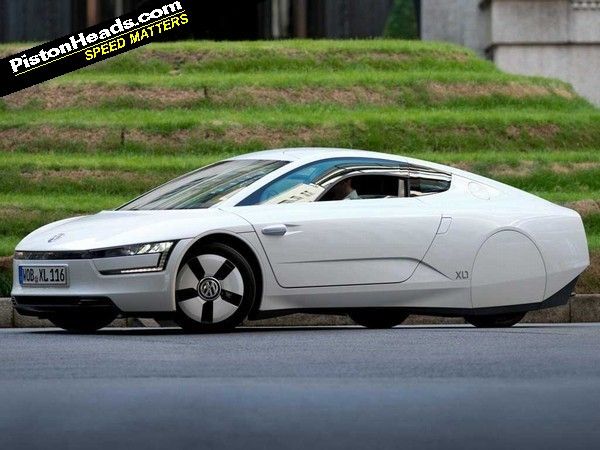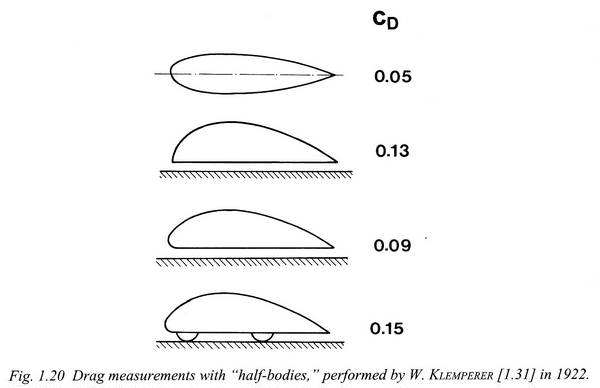Volkswagen XL1: the tech
Inspired by penguins says VW - bulls**t says the designer. PH gets to the truth...

The XL1 represents a decade of development of Ferdinand Piech's vision for a usable car capable of 1l/100km (282mpg). This began with the L1 of 2002; by the time the 2009 L1 was revealed, work was already underway on the production XL1.
This is really an engineer's car, and it's therefore hard to avoid a comparison with original Honda Insight. Both employ a methodical and innovative approach to efficiency, rejecting the conventional dullness of hybrid vehicles to wide acclaim. Whether you will ever be able to buy an XL1 for £3,000 though, is another matter...
Surprisingly, the Porsche 917 is another vehicle the XL1 has ties with. Ferdinand Piech was involved with both projects, and there are links between the two; the Porsche was one of the first cars to use magnesium wheels, as does the XL1. The rear-mounted fans in both are similar and the overall proportions are not dissimilar. Unsurprisingly, the Porsche Le Mans legend isn't mentioned in the press pack...
Body and chassis
VW designer Peter Wouda rebukes the official claim that the XL1's appearance is based on a penguin, whose drag coefficient is, according to VW, an amazing 0.03. "That's marketing bulls**t. I was inspired by sharks." That's settled then.
But that does explain the aggressive yet smooth front end and narrow rear, with every surface made as flush as possible. The rear windscreen is steeply raked, the underside flat and the rear wheels covered to boost the XL1's aerodynamics. The overall result is an astonishing drag co-efficient of 0.189.
The windows are made from polycarbonate, which is around a third lighter than glass. On top of the weight saving, the flexibility of polycarbonate gave the designers more freedom with the glasshouse. It also means that side airbags aren't necessary as it will not shatter like regular glass.
The meticulous attention to removing unnecessary weight continues inside. The dash is made from recycled wood pulp, mounted in a magnesium carrier and then trimmed in a carbon film. Driver and passenger both sit in carbon fibre seats without conventional height and backrest adjustment, with each one weighing just 11.6kg.
Wheels, brakes, tyres
The magnesium wheels are covered by slatted trims to aid cooling of the carbon-ceramic brakes. They are used to further reduce unsprung mass and each is 280mm in diameter.
Powertrain and transmission
In layman's terms, the XL1's 800cc two-cylinder engine is half of the 1.6-litre diesel found in something like a Golf Bluemotion and produces 50hp. With the electric motor's assistance, total power is 67hp. It is supplied by a lithium-ion battery pack rated at 5.5kW/h, which is water-cooled and cased in the same carbon fibre reinforced polymer as used on the XL1's tub and body. In total, the battery pack weighs 68kg.
The XL1 is a parallel hybrid, meaning it can run on either power source or both. The electric-only range is 50km (31 miles) with a top speed of 70mph. At 1l/100km (282mpg, below the official claimed figure), a range of 1,000km is theoretically possible with a 10-litre tank. Emissions are rated at 21g/km of CO2. A full battery charge takes between 90 and 160 minutes depending on the supply, plus regenerative braking also restores charge.
The DSG is the same as used in other VW group models, but with magnesium components rather than aluminium to save weight.
Obviously these will be overpriced roadgoing concepts but a properly productionized real world example at a real world price would be IMO very popular. I could certainly live with a small 200mpg commuting vehicle- saves fuel, trees and penguins so you can drive a "real" car at the weekend :-)
Frankly it would be nice just to see some sensible weight saving measured applied to current normal cars, its crazy that so called super-mini types weight 1500kgs or more!
However, I'm astonished looking at the measures they have taken to remove weight that it's only 60KG lighter than my Insight. I'm guessing it's NCAP driven.
Also, I'd be worried about the polycarbonate windows yellowing.
I'm not sure however that i'd forgo the side airbags just because the windows no longer break? Whilst it is currently trendy to state than some natural item (sharks, penguins, eagles, fish or whatever) was your inspiration, when it comes to aero drag, then all you ultimately want is to pick one of these:

and then do this:

Note the date btw, Nothing really new in aero for a while!
What a load of nonsense. The Euro Ncap pole test and side impact test will illustrate very well the advantages of side airbags and it's nothing to do with protecting occupants from virtually harmless safety glass. Who wrote such nonsense?!
 k is that!!!!!!!
k is that!!!!!!!Please VW do not follow BMW into a decade of seriously ugly ducklings, why can they not fit the new tech into exisitng models that a look good and b sell well?
Gassing Station | General Gassing | Top of Page | What's New | My Stuff








